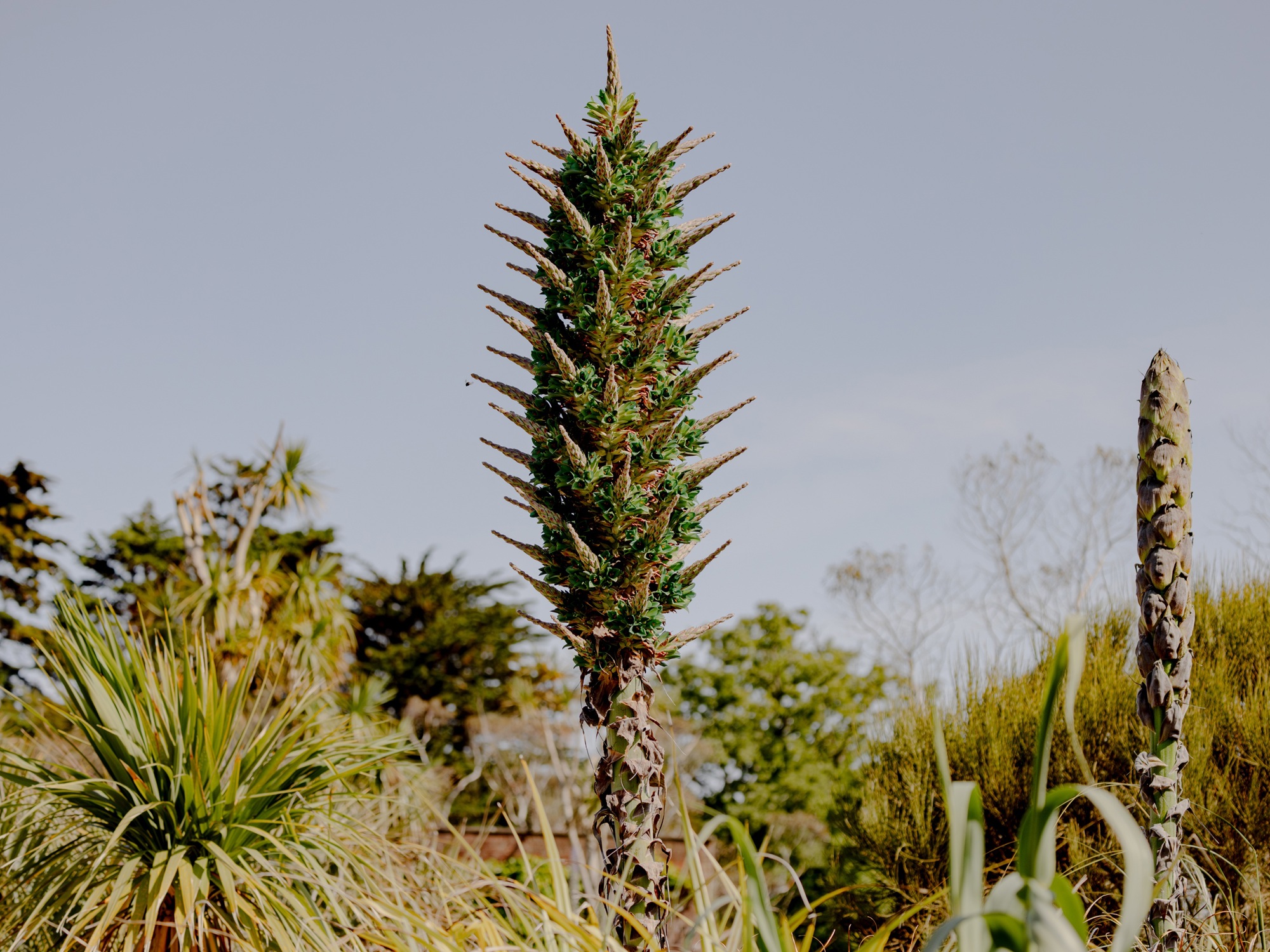In the week when millions of viewers reflect on the power of a new television documentary asserting that tropical rainforests are “plant battlegrounds,” leading experts at the Royal Botanic Garden Edinburgh (RBGE) are highlighting the struggles still to come if we are to beat the clock and save this green planet for future generations.
Far from the forests explored by David Attenborough in the first instalment of his new BBC series The Green Planet, Dr Mark Newman heads up RBGE’s Tropical Diversity Group. This team focuses on efforts to describe and conserve species and to understand the dynamics of their communities in regions including SE Asia, before these ecosystems may be destroyed through human activity. The nature of the group’s research – and the complementary work of their colleagues in conservation horticulture – embraces the full diversity of tropical ecosystems, from giant trees to herbaceous plants growing both on the forest floor and epiphytically in the canopy, and from dry valleys to savannas and grasslands, all key components of tropical flora.
Recognised as a leading expert in Zingiberaceae, the ginger family, Mark works with colleagues in Edinburgh and SE Asia, together providing strong evidence of the numbers of new species still to be found in tropical forests. Far from being just an exotic spice, gingers make up a significant family of perennial herbs. Comprising 55 genera and around 1,300 species, they are both widespread and economically important. In 2020/21 alone, Mark and Thai colleague Sunisa Sangvirotjanapat published 19 species new to science from just one ginger genus, Globba. In Cambodia, one of these species, Globba securifer, is the 13th Globba species to be described in the last five years.
These results, especially during a pandemic when tropical fieldwork has all but ceased, indicate just how much plant diversity remains to be described. But will these forests survive long enough to be researched and documented? Naming and describing plants is a crucial first step in their conservation. Mark explained:
“Biodiversity, or the number and variety of species on our green planet, is important to us because it forms the environment in which we live, supplying food, water, clean air, medicines and less tangible benefits to our well-being, such as the sight of flowering fields or the sound of birdsong.
“We have known for many decades that changes in land use have a detrimental effect on biodiversity. Human activities such as deforestation are having a huge impact and climate change caused by our way of life is speeding up the loss of species and habitats. This is particularly acute in the tropics where we know much less about the species and their interactions with each other. Even a cursory glance through the scientific literature will show that new species are being discovered at a very high rate, but we are far from knowing all the species in the world. We must act quickly to discover and describe all the world’s species before the accelerating rate of extinction prevents us from doing anything to conserve them.”
At the helm of the research institute’s quest to conserve biodiversity is Regius Keeper Simon Milne MBE who underscored the need to keep up the current momentum: “Working in around 50 countries, from tropical SE Asia to Central and South America and at home in Scotland we are constantly reminded of the race against time to secure a future for the planet as we know it. Our world is facing the unprecedented twin crises of climate change and biodiversity loss. Plants are our life support system, yet an astonishing 40 per cent are estimated to be threatened with extinction. In the wake of COP26 in Glasgow and as delegates prepare to meet this spring at the equally important biodiversity COP in Kunming, China, individuals and society together must appreciate how crucial the natural world is to human health and well-being. It is not over-dramatic to say we are running out of time.”
ENDS
For further information, interviews, or images, please respond to this email or contact Shauna Hay on 07824 529 028 or Suzie Huggins on 07385 491 460
Tropical Diversity at RBGE
Gingers
SE Asia, is a hotspot for ginger diversity, a key area of research for RBGE and its partners – research indicates there are many new and endemic species still to discover. However, we are racing against the clock.
Species description is crucial to conservation and sustainable use – “you can’t protect it until you know it’s there.”
Conservation assessments are also crucial – estimates of distribution, population size, threat are essential to prioritise and monitor conservation action.
Recently described new species in tropical gingers:
- Sangvirotjanapat, S., Fér, T., Denduangboripant, J. Newman, M.F. 2022. Phylogeny of Globba section Nudae and taxonomic revision of the new Globba subsection Pelecantherae. Plant Syst Evol 308:5. https://doi.org/10.1007/s00606-021-01789-6
- New species Globba pelecanthera and G. securifer – uses combination of traditional morphological taxonomy and molecular data
- Sangvirotjanapat, S. & Newman, M.F. 2021. Eight new species of Globba (Zingiberaceae) from Thailand and Lao PDR. Phytotaxa 505:2. https://doi.org/10.11646/phytotaxa.505.2.2
- New species Globba chrysantha, G. janae, G. larsenii, G. longiligulata, G. luteola, G. mollis, G. poomae, and G. rupestris
- Ardiyani, M., Ardi, W.H., Hutabarat, P.W.K. & Poulsen, A.D. Etlingera comosa, a new species (Zingiberaceae: Alpinioideae) from central Sulawesi. Reinwardtia 20:2. http://dx.doi.org/10.14203/reinwardtia.v20i2.4243
- New species Etlingera comosa – terrestrial and epiphytic

